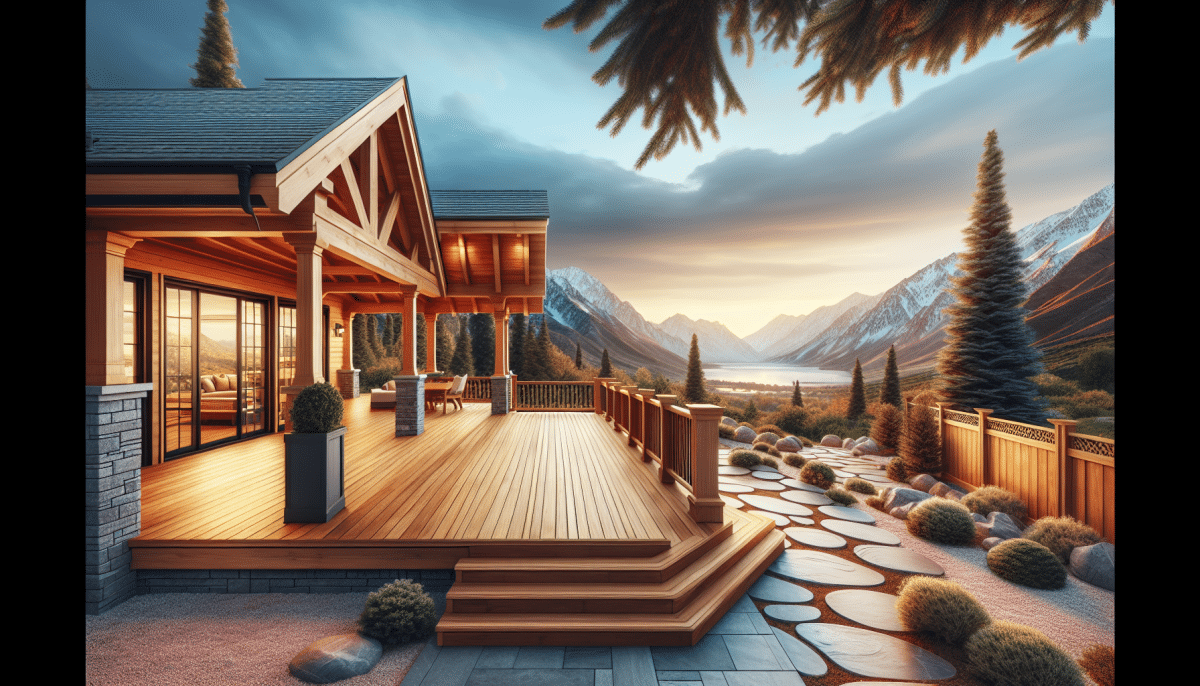Welcome to the ultimate guide to softwood decking brought to you by Utah Deck Supply! If you’re a homeowner considering a new deck, you probably have questions about the best Materials to use. We’ve compiled this article to help you navigate through the quirks and perks of softwood decking. Whether you’re a DIY enthusiast or looking to hire professionals, this guide will arm you with the knowledge you need.
What is Softwood Decking?
Softwood decking is sourced from coniferous trees, such as pine, fir, and spruce. These woods are known for their softer texture and ease of working with. Despite their name, softwoods can be incredibly durable and long-lasting when treated correctly. They are a popular choice among homeowners due to their affordability and aesthetic appeal.
Softwoods are particularly compelling for those wanting a natural appearance. The grain patterns and colors can add character to any outdoor space. When maintained properly, a softwood deck can serve as an inviting area for family and friends.
Advantages of Softwood Decking
When it comes to pros, softwood decking has plenty to offer.
First, it’s cost-effective. Softwoods generally come at a lower price point compared to hardwoods and composite materials.
Second, it’s easy to work with. These woods are easier to cut and shape, making them ideal for custom designs.
Additionally, softwoods have a quicker drying time, which means your deck project can be completed faster. All these factors make softwood decking a popular choice.
Types of Softwood for Decking
When it comes to softwood decking, several types of wood can be used. Each has its unique characteristics and benefits.
Western Red Cedar is well-known for its natural resistance to decay and insects.
Douglas Fir is another popular option, offering both strength and durability.
Southern Yellow Pine is often chosen for its sturdy texture and ability to withstand heavy use.
Hemlock provides an elegant appearance with a sleek grain pattern.
When deciding on a type, consider not only the visual appeal but also the specific needs of your deck.
How to Choose the Right Softwood
Selecting the right type of softwood is crucial for the longevity and performance of your deck. Start by considering the climate. Some softwoods perform better in certain weather conditions. For instance, cedar is highly resistant to moisture, making it ideal for wet climates.
Next, think about the level of foot traffic your deck will experience. If it’s a high-traffic area, opt for a softwood like Douglas Fir that offers greater durability. Lastly, don’t forget the visual aspect. Different types of softwood have unique hues and grain patterns, so select one that complements your home exterior.
Treatment and Protection
Softwood decking needs to be treated and protected to ensure its longevity. Begin with a good quality preservative. This will help protect the wood from rot and insect attacks.
Once the wood is treated, consider applying a stain or sealant. This adds an extra layer of protection and enhances the wood’s natural beauty.
Maintain your deck by reapplying treatments every few years. Regular upkeep will keep your deck looking fresh and extend its life for many years.
Installation Process
Installing a softwood deck can be broken down into several key steps.
First, prepare the ground by clearing any debris and leveling the surface.
Next, set the foundation using concrete piers or Footings.
Once the foundation is in place, you can begin installing the frame.
After the frame is complete, lay down the decking boards, ensuring they are properly spaced to allow for expansion and contraction.
Lastly, secure the boards with screws or nails, making sure everything is tightly fastened.
Follow these steps, and you’ll have a sturdy and attractive deck.
Maintenance Tips
Keeping your softwood deck looking its best requires regular maintenance. Here are five essential tips:
- Cleaning: Regularly sweep away leaves, dirt, and debris. Use a mild detergent and water to scrub the surface.
- Inspection: Periodically check for signs of rot, mold, or insect damage. Address any issues promptly.
- Sanding: Lightly sand the surface every couple of years. This removes any rough areas and prepares the wood for resealing.
- Sealing: Reapply a sealant every few years. This will protect the wood from moisture and UV damage.
- Repairs: Replace any damaged boards immediately. Ignoring small issues can lead to bigger problems down the line.
Follow these tips to keep your deck in pristine condition year after year.
Common Issues and Solutions
Softwood decks can face various issues, but many are easy to fix. One common problem is warping, which can occur if the wood isn’t adequately treated. To fix this, ensure the wood is properly sealed and try to maintain a balanced moisture level.
Another issue is the growth of mold or mildew. This can make your deck slippery and unsightly. Combat this by regularly cleaning your deck and using anti-mold treatments.
Lastly, insect infestations can be a concern. Regular inspections and treatments will keep pests at bay.
Why Choose Utah Deck Supply?
At Utah Deck Supply, we pride ourselves on delivering top-quality decking materials and expert advice. Our knowledgeable team is here to guide you every step of the way, ensuring you choose the best softwood for your project. We offer a wide variety of softwood options, each hand-picked for durability and beauty.
From initial Consultation to final installation, we’ll be by your side. With high-quality Products and exceptional customer service, we strive for complete customer satisfaction.
Conclusion
Choosing the right softwood deck can seem overwhelming, but Utah Deck Supply is here to help. From selecting the best wood to providing tips for maintenance, we’ve got you covered. Ready to transform your outdoor space? Contact Us by phone # 385-993-5492 or Request a Free Quote.




